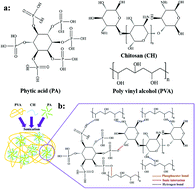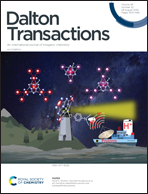A facile and green strategy to simultaneously enhance the flame retardant and mechanical properties of poly(vinyl alcohol) by introduction of a bio-based polyelectrolyte complex formed by chitosan and phytic acid
Abstract
There are still some key problems in the process of the flame retardant treatment of poly vinyl alcohol (PVA): poor compatibility, deteriorating mechanical properties and potential toxicity to human health and environment. To solve these issues, a green and eco-friendly bio-based polyelectrolyte complex (PEC) formed by chitosan and phytic acid was designed to enhance the flame retardant and mechanical properties of PVA by a facile ultrasonic-assisted solution blending method. Moreover, the mechanical and flame retardant properties could be regulated by varying the ratio of each component in the PEC. Thermogravimetric analysis (TGA) indicated that after the introduction of PEC, PVA/PEC composites maintained better thermal stability and char formation ability. Besides, when the addition of PEC reached 20 wt%, the limited oxygen index (LOI) value of cured PVA increased from 18% to 25.9%, 30.8% and 35.6% for PVA/20(2 : 1) PEC, PVA/20(1 : 2) PEC and PVA/20(1 : 8) PEC, respectively. Moreover, UL-94 V-0 rating was achieved except for the PVA/20(2 : 1) PEC. Compared with pure PVA, the peak heat release rate (pHRR) and the total heat release (THR) of PVA/20(1 : 8) PEC demonstrated a sharp decrease by 69.9% and 45.5%, respectively, in the microscale combustion calorimeter measurements (MCC). These results indicate that PEC can endow PVA with excellent flame retardancy. Furthermore, the microscopic investigations on char residues of all samples by scanning electron microscopy, Fourier transform infrared spectra and Raman spectroscopy revealed the possible flame retardant mechanisms in condensed and gaseous phases. In addition, PVA/PEC composites have better mechanical properties owing to their harder backbones of chitosan, formation of phosphonate bonds and the PVA molecular chain movement blocked by PEC. As a result, the facile processing technology and eco-friendly flame retardants are expected to be applied in practice.



 Please wait while we load your content...
Please wait while we load your content...